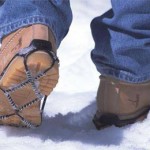Fractu res (or broken bones) of the ankle and wrist are common injuriesduring the winter months. We thought it might be useful to review some of the common injuries that often require urgent treatment.
res (or broken bones) of the ankle and wrist are common injuriesduring the winter months. We thought it might be useful to review some of the common injuries that often require urgent treatment.
Wrist (Distal Radius)Fracture
A “Colles” (distal radius) fracture is a particular type of wrist fracture involving the distal radius. This very common fracture occurs with a fall on an outstretched hand, often breaking a fall. Diatal radial fractures also occur during skiing, snowboarding or other falls . This particular fracture type is relatively common and can often be treated in a cast. In our clinic, we can usually treat these with waterproof Goretex casting that allows the cast to get wet during the treatment process However, some cases of Colles’ fractures require surgical intervention when proper alignment is necessary.
Bennett’s Fracture of the Thumb, Skier’s Thumb
A Bennett fracture is an injury that occurs at the bottom of the thumb. This type of fracture involves the joint between the thumb and the wrist bones. A Bennett’s fracture occurs as the result of a fall, and people who participate in activities like ice-skating, skiing, and snowboarding are at high risk. Another common injury is skier’s thumb, where a skier excessively stretches out their thumb causing a fracture or a torn ligament. Patients who sustain a Bennett’s fracture or skier’s thumb. usually require surgery to realign the bones and to stabilize the joint area. If the joint surface is out of position, surgery is typically recommended.
Hand/Finger Fractures
Hand fractures are common injuries that can occur during the winter months. These occur in any of the hand or finger bones. Most fractures in the hand can be treated with application of a simple waterproof cast, however for some cases hand fractures may require surgery. Surgery is recommended if there is damage to the joints, the bones are not aligned properly, adverse function will occur. It is important to have all hand, wrist and finger fractures evaluated by an orthopedic specialist. Our hand specialists are happy to prioritize your fracture to speed your recovery.
Scaphoid (Navicular) Fracture
A Scaphoid (navicular) fracture is caused by a fall on an outstretched wrist, causing persistent wrist pain at the base of the thumb. This can occur when walking on ice or doing activities outdoors during the wintertime. These fractures are unfortunately often misdiagnosed as sprains causing problematic complications as this bone has a complex blood supply, which unfortunately can lead to healing problems. This bone is one of the eight important wrist bones. If the scaphoid bone is broken (fractured), often surgery can allow for early recovery.
Finger Fractures
A broken finger is a common injury that is seen during the wintertime. Finger fractures can have serious consequences if not treated properly. These injuries require appropriate treatment to ensure that function of the hands and fingers is not limited after the healing process. In order to determine the best treatment, these fractures require evaluation by an expert orthopedic specialist. Sometimes, finger fractures require surgery if the phalange bones (the finger bones) are not aligned properly.
What are the common fractures of the ankle and foot that are associated with winter weather?
Ankle Fracture
An ankle fracture is the most common fracture that occurs with twisting injuries during winter months. Broken ankles are among the most prevalent of the fracture types and include injuries to the distal fibula (lateral malleolus) and medial malleolus. These injuries occur when the bones of the ankle sustain injury from a fall or twisting type injury. Surgery is often necessary for ankle fractures to achieve proper alignment during the healing process. Our orthopedic specialists will align the structures of the ankle during the operation and cast the region afterwards to achieve and maintain the alignment.
Talus Fractures
A talus fracture occurs when the talus bone of the foot is broken. The talus bone is one of the important connecting bones between the leg and the foot. The talus bone has cartilage that connects to the hind-foot region and the ankle. Talus fractures usually require surgery and unfortunately, many patients have long-term ankle arthritis after this type of fracture.
Jones Fracture
A Jones fracture is a fracture of the fifth metatarsal of the foot. The metatarsals are the long bones that lead to the toes. Patients who sustain a Jones type fracture typically will have pain over this middle and outside areas of their foot. Snowboarders, skiers, and ice skaters all are at risk for this type of fracture. Swelling and difficulty walking are also common. The treatment of a Jones fracture involves immobilization with a waterproof cast. Surgery might be recommended by our surgeons with competitive athletes or in poor healing fractures to accelerate the healing process. Surgery usually involves screw placement, and occasionally bone grafting when the fracture in not healing properly.
Calcaneus Fracture
The calcaneus is the large bone of the heel. This bone helps support the foot and is vital for proper walking motion. Calcaneus fractures often occur in the wintertime as the result of high-energy injuries. These fractures are the result from a fall from height or sporting activity related injuries. These types of breaks can lead to chronic pain of the foot, and treatment could involve surgery, depending on the severity of the fracture. Most procedures involve making an incision over the outside of the foot and placement of a metal plate and screws directly into the broken heel bone. Our orthopedic specialists make every attempt to realign the bone and return the cartilage surface to normal position.
Lisfranc Fracture/Sprain
This type of fracture/sprain occurs when there is an injury to the joint in the mid-foot region. Dislocation is usually involved with a Lisfranc fracture, and this injury is the result of a dislocation between the mid-foot joint and the forefoot region. These types of fractures occur when the person steps improperly and the foot is twisted with much force. Many sustain a Lisfranc injury during sporting activities outdoors and from falls on ice. Most Lisfranc fractures and dislocations require surgery, and afterwards, casting is common. The more common treatment the orthopedic surgeon employs involves placement of internal screws or external pins for fixation.
Metatarsal Stress Fracture
Metatarsal stress fractures occur in people who have a sudden increase in activity. In the winter months, this could include snow shoveling, working on icy walkways, skiing, and snowboarding. Metatarsal stress fractures cause a considerable amount of foot pain, especially with activity. When these injuries are not allowed adequate healing time, surgery is often necessary. Most of the time, however, these can be treated with rest and possibly a cast. You should check with our orthopedic specialists if you think you have a metatarsal stress fracture as timely treatment can lead to early recovery.
Ice Safety Tips

- Wear boots with grip soles such as those made of rubber and neoprene. Slick leather or plastic soles on shoes will definitely increase your risk of falling.
- When getting out of your vehicle, look down and analyze the surface. If it’s coated with ice you should attempt to park in a different place.
- Use special care when entering or exiting your car. Be sure to use the vehicle for support when walking, too. Before standing brace yourself, using the car door and seat back, this will give you some stability so you won’t fall.
- Step – don’t jump – from vehicles and outdoor equipment.
- Don’t walk with your hands tucked in your pockets, as this reduces your ability to use your arms for balance should you slip.
- Take short shuffling steps in icy and slick areas.
- Don’t carry or swing heavy loads. This includes large boxes, cases, or purses that may cause you to lose your balance when you are moving along a slick surface.
- When walking, curl your toes under and walk as flat-footed as possible.
- Avoid curbs and other uneven surfaces that have ice on them.
- Place your full attention on walking and avoid searching in your purse or backpack while walking on ice or slick areas.
- Test potentially slick areas by tapping your foot on them or sliding your foot along them.
- Keep walkways clear of debris, water, ice, and slippery materials by using rock salt.
Contact our orthopedic specialists or a doctor if you think you have a fracture or injury.
Find OSS on Facebook and follow on Twitter to keep up to date on new articles and news.

